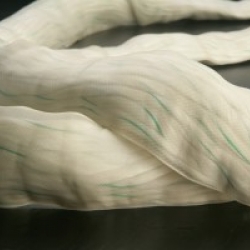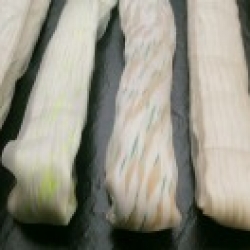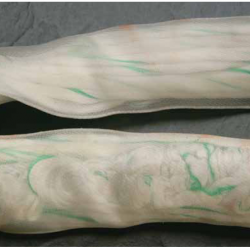The Inspectable Roundsling®
The History
In the history of sling standardization, the synthetic roundsling has remained the one and only type of sling wherein the actual load bearing material has been completely hidden from the sling user for visual inspection. Inspection and removal criteria have relied almost entirely upon the appearance and condition of a cover with NO rated capacity.

The cover serves to embody, secure and protect the sling’s core and round shape. The focus of industry improvements has traditionally taken two directions. The use of high strength core yarn fibers to produce “high performance” synthetic roundslings with higher rated capacities and the selection of heavier duty, heat or chemical resistant cover fabrics.
Regardless of the type of cover, multiple uses and fiber on fiber abrasion between the core yarns may cause yarn deterioration and destruction, decreasing strength and preempting sling failure. Layer upon lay of covers have been used as “fixed protection,” allowing sling damage and deterioration to go unobserved.
 External indicators have been added in attempts to provide signs of core wear or damage. The common result of each piece of this sling jewelry is the removal of the sling from service and its return to a manufacturer for evaluation. The load bearing core, with certain rated capacities, remains hidden. Training for external indicators is confusing and costly and held outside the scope of standardization.
External indicators have been added in attempts to provide signs of core wear or damage. The common result of each piece of this sling jewelry is the removal of the sling from service and its return to a manufacturer for evaluation. The load bearing core, with certain rated capacities, remains hidden. Training for external indicators is confusing and costly and held outside the scope of standardization.
Tails
There is no predictable way of determining when the failure indicator will be triggered.
Optics
May indicate an overload condition when, in fact, no overload condition was reached.
The Invention
The Inspectable Roundsling®
The transparent cover embodies and protects without prohibiting a visual inspection of the working roundsling, the core, or the lifting sling!
Wire rope slings, chain slings, fiber rope slings, wire mesh slings and flat web sling inspections…none require costly or confusing accessories to perform a visual inspection. Now riggers can see their roundslings too.
U.S. Patent #7,475,926, Canadian Patent #2,614,374
Australian Patent #2006259277
Other U.S., Canadian, and Foreign Patents Pending



